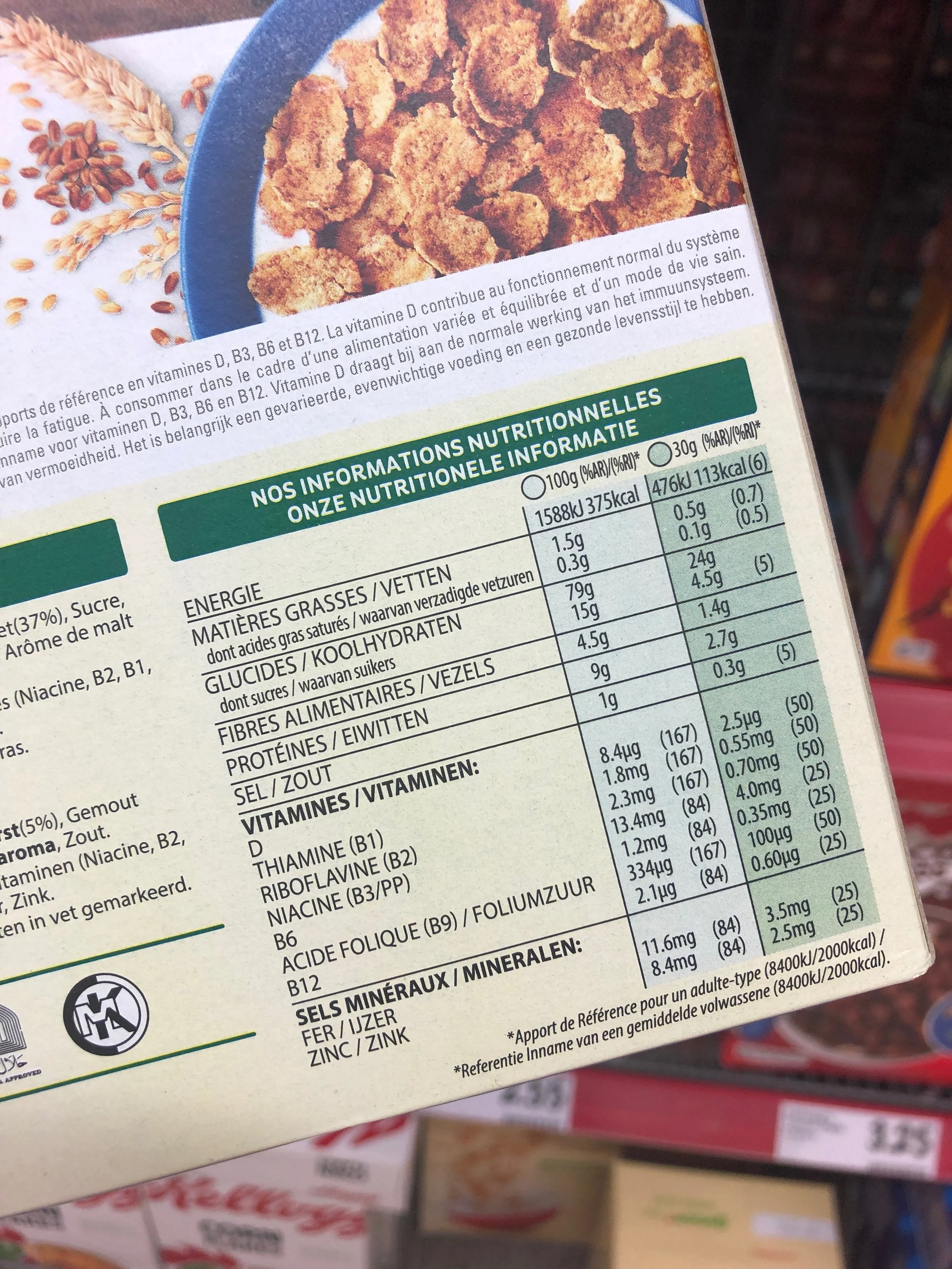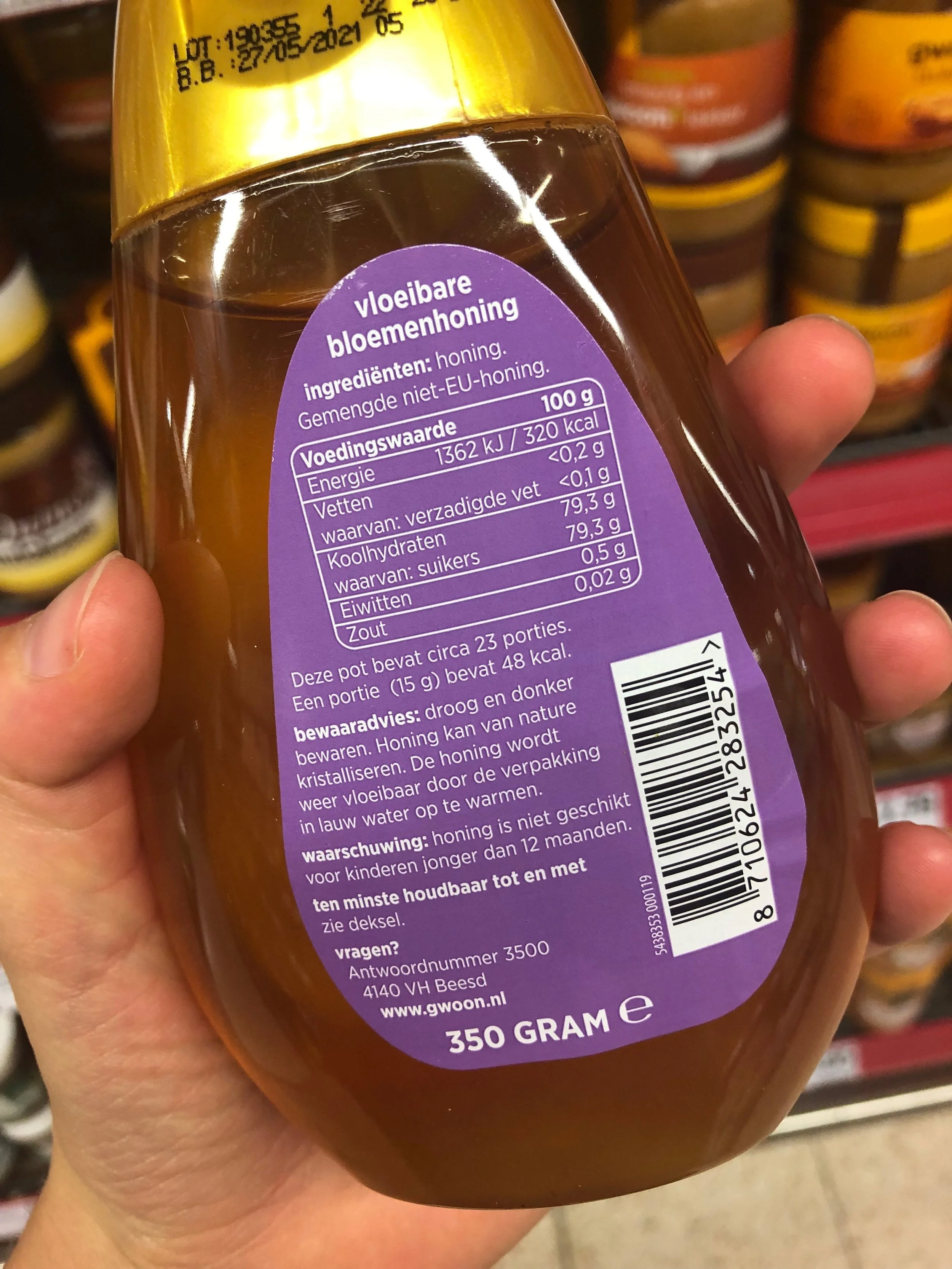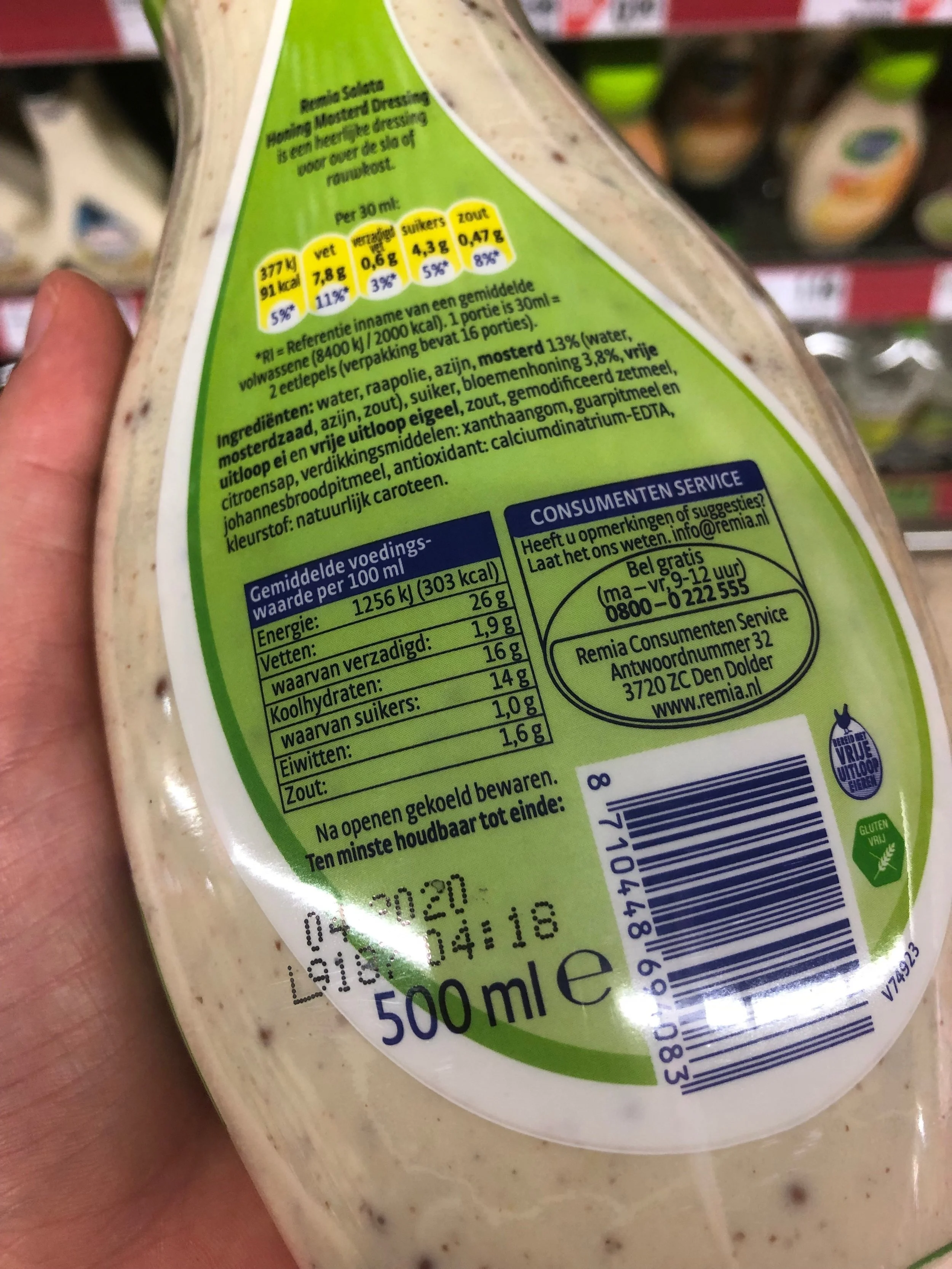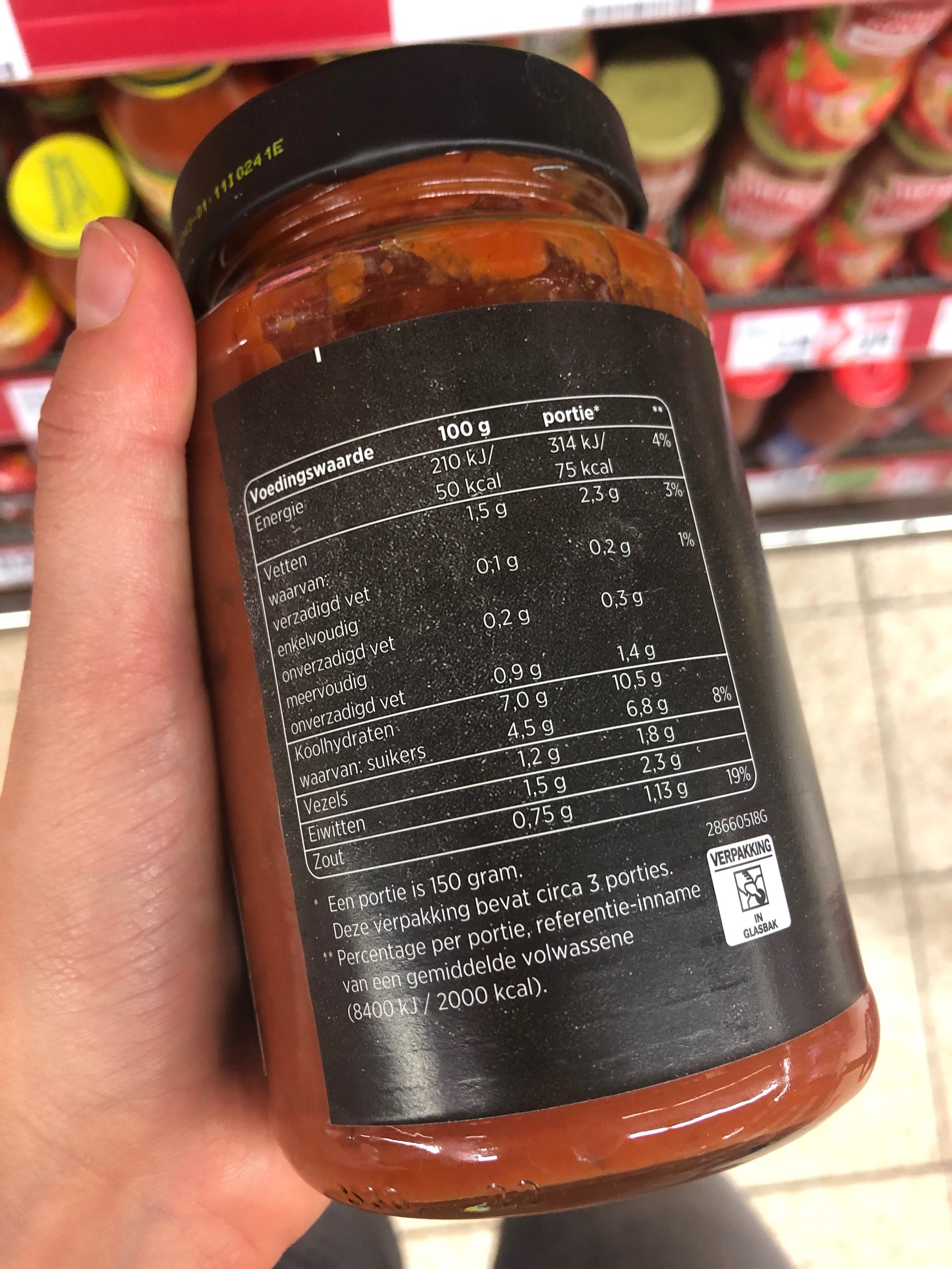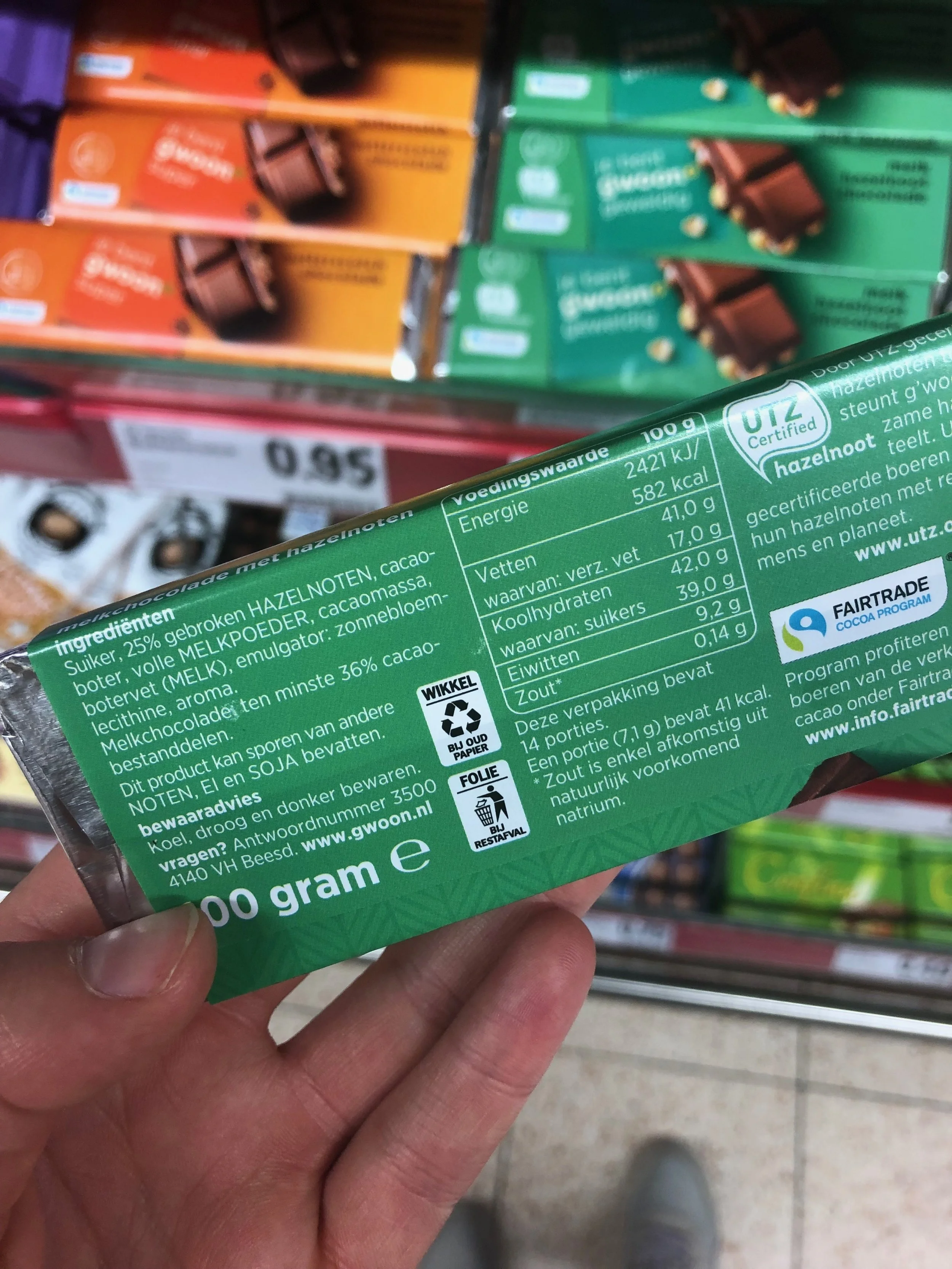Your How-To Beginner's Guide to Start Cutting Out Sugar
Personally, I don't have an opinion on the diet you are currently on (or not on), whether it is keto, low-carb, mediterranean, paleo or the I-see-I-eat diet. What I do have an opinion on, is the amount of sugar you eat in a day. Hidden sugars in your daily foods could be the key factor in making or breaking your quest for a healthier body! With this article I want to bring your attention to how much sugar you might be consuming daily, the benefits of cutting out sugar and last but not least some hands-on practical tips on identifying these hidden sugars in the food products you buy, because 1) Food companies can add crazy amounts of sugar to products due to the lack of regulation on the amount of sugar permitted per serving and 2) the nutrition labels on the food product can be hard to understand.
Negative health effects of consuming too much sugar
You’ve probably heard it, read it, saw it a thousand times already, “Sugar is the enemy!”. If you have not yet, then you should with an open mind entertain the idea that the traditional high-carb low-fat diet labelled by Dr Ancel Keys as “healthy in the 1970’s, is a big fat lie. In fact, the mass adoption of this “healthy” way of eating could be the root cause of the alarming increase in the number of people being diagnosed with obesity, cardiovascular diseases, and Type 2 Diabetes. Studies after studies are linking the increase in the number of these diseases back to one common key factor; the increasing consumption of sugar in the modern era and especially, added sugar. To illustrate this as being a growing issue, nowadays more than 50%(!) of food products in Dutch supermarkets contain added sugars.
If you are not yet convinced about the effects added sugar can have on your body, you should definitely watch the movie That Sugar Film in which Gameau follows the so-called health-conscious low-fat high-carb diet. Without any spoilers, the outcome is shocking.
An illustration of the so-called healthy low-fat diet
Let’s assume you are a busy working professional with a packed daily agenda. Your breakfast is a bowl of ‘healthy’ low-fat Greek vanilla yogurt with some berries, Kellogs ‘healthy’ cereals and a generous drizzle of organic honey. At work, you grab a salad and add some fat-free dressing to it and then slurp on that mandatory cappuccino with two cubes of sugar in the afternoon to shoo away the dreaded afternoon dip. You are home late from work, you make a decent serving size of pasta in Arrabbiata sauce and dig into that piece of chocolate or a brownie for dessert because you’ve had a tough day at work! All this summing up to 1800-2000 calories of food you have consumed.
Now, it is interesting to have a look at some of the food labels of the products that have been consumed on this day. We picked the following products from the Dutch supermarket: cereals, honey, fat-free salad dressing, tomato sauce, and chocolate.
1 portion: 4,5g sugars
1 portion: 11,9g sugars
1 portion: 4,3g sugars
1 portion: 6,8g sugars
1 tiny piece: 3,9g sugars
To illustrate, in this one single day you have already consumed around 30 grams of sugar by only eating the above products! All the other products that we are now missing such as bread, Greek vanilla yogurt, the sugar cubes, pasta, the brownies and other snacks roughly brings your sugar consumption for that day to 100 grams! This amount probably doesn’t sounds like a lot, and you are not alone; as per this research most American adults also consume the same amount of sugar each day. However the American Heart Association advises that an adult consuming between 1800-2000 calories should not consume more than 6-9 teaspoons or 30 grams-45 grams of added sugar per day. To put this in perspective, one single regular Snickers bar alone has already 30 grams of sugar!
The truth about hidden sugars
56, that is how many names sugar has and I can bet, you now know a few of them, me too! Some of the basic simple sugars are dextrose, fructose (in fruits), galactose, glucose, lactose, maltose, and sucrose. Oh, and that honey you add to your breakfast, has quite some sugar in it too. The food industry uses sugar in your food products to make the food taste yummier, look better (caramelization effect) and preserve them longer. Or even worse, they do this simply to make you buy their products again, due to the fact that eating sugar releases dopamine which makes you happy. No wonder eating something sweet is comfort food for millions of people!
Since sugar has so many names, food companies usually use a variety of them in one single food item to keep the “Sugar” part of the nutrition label seem low. For example, the label could show 2 grams of added sugar but, hide other sugars like dextrose, maple syrup etc. in the ingredient list! Sugar can be found in almost every single processed food item like cereals, ketchup, mayonnaise, low-fat yogurt, healthy cereals, tomato puree etc etc etc, you get it. So it is critical that you are able to find identify these sugars.
To help you with this, we created a PDF with 20 most common names of hidden sugar. You can access it and simply save it to your phone by clicking on the image below.
The health benefits of cutting out sugar
Since eliminating sugar can be a challenging journey itself, it is reasonable that you want to know what you can expect before you dive into it. And that is a lot.
Health benefits of cutting out sugar
Improved Sleep
Less cravings
Improved energy levels
Improved teeth health
Reduced belly fat and less bloating
Better and clear skin
Weight loss
Lower blood pressure
Lower LDL levels (the bad cholesterol, more on this topic on another blog soon)
Reduced risk of developing cardiovascular diseases, alzheimer’s, diabetes, dementia and certain types of cancers
Those are just a few of the many benefits you stand to gain from cutting out sugar from your diet! And if these are not good enough to convince you to give eliminating sugars out of your diet a go, then I have no idea what will? Cute cat pictures perhaps? ;)
Nutritional labels and sugars
To figure out if a food product contains hidden or added sugars, and in which amounts, you do have to act a bit like a detective. The images of the nutrition labels from few of the popular “healthy” food products shown earlier might have you thinking that it is going to be a challenge to find and avoid / find food products that are high in sugar.
The most widely used nutrition label is called Guideline Daily Amounts (GDA). The challenge with this nutrition label is that it is quite complex to decipher with its percentages, and names of ingredients half of which sounds like ingredients that could be used in a meth lab! This means that Food Manufacturers can get away quite easily by masking the unhealthy nature of the food product.
How to become a sugar detective
Enough background information on the mysterious and shocking sugar devil. Let’s break down 5 simple tips that help you make sense of the food labels. This, to make a more mindful purchase the next time you are you are at the grocery shop!
Tip 1: Look at the ingredient list and keep an eye out for the word sugar of any kind, anything that has an “ose” at the end of it, e.g. Fructose, Glucose, Sucrose. These are some names of sugars that you should most certainly avoid. In addition to this also keep an eye out for anything that has syrup at the end of it and two other types of sugar - Dextrin or Maltodextrin. Use the PDF we created for you to recognize sugars during your next supermarket trip!
Also: know the rule of what comes first, makes up the largest part. If the first ingredient of a food product is sugar for example, you know this is the ingredient that makes up the largest part of the product. Always check the first 3-5 ingredients to have a clear image of how healthy the product is.
Tip 2: To have a better idea of how much sugar you actually consume, remember this rule of thumb that 5 grams of sugar equals 1 teaspoon. The American heart association recommends not more than 9 teaspoons or 45 grams added sugars per day! So carefully look at each food item and see if consuming it will hit this limit. Ideally, you want to keep your sugar intake to none or lower than 30 grams per day.
Tip 3: You might have seen people buying organic candy since they assume these products are healthier than the non-organic version. Don’t let pretty ‘health’ claims fool you! Claims such as ‘organic’, ‘low-fat’, and ‘natural’ don’t say anything about whether a product contains sugar or not. Be sure to read the label of a food product with such a claim carefully. Organic or natural table sugar are in no way any better than regular table sugar.
Tip 4: If cutting out sugar entirely is still too daunting for you, yet you still want to make a positive change, swap added sugars for purer alternatives such as dates and lucuma powder. These products still contain some vitamins & minerals.
Tip 5: Don’t drink your sugars! If you want to significantly cut out sugars, sugary drinks are one of the most obvious sources to start eliminating. From lemonade, sodas, processed fruit juices, sports drinks, sweetened coffee drinks and even alcoholic beverages – these drinks provide no nutritional value but only empty calories. These drinks create a vicious cycle of cravings, spiking an insulin rush, followed by a crash and repeated cravings.
Start Today, thank yourself later
It’s worth repeating; consuming excessive amounts of sugar in the diet can be incredibly harmful and has been linked to many chronic diseases, including cancer, type 2 diabetes, heart disease and obesity. As you have read, the average American consumes more than twice the recommended maximum amount of added sugar per day and you probably are too!
To start cutting out sugar, it is important to eliminate obvious sources of sugar in your diet. Think about desserts and sugared beverages. This being said, it is as important to be aware of the most common names of hidden sugars in some processed food products including sauces, low-fat foods and so-called “healthy” cereals. The best way to not be fooled by manufacturers is to avoid processed foods altogether.
Implement a lifestyle based on whole foods rich in healthy fats and low in sugars, rather than on highly processed alternatives. By doing this, you can be fully in control and mindful of your sugar intake.

